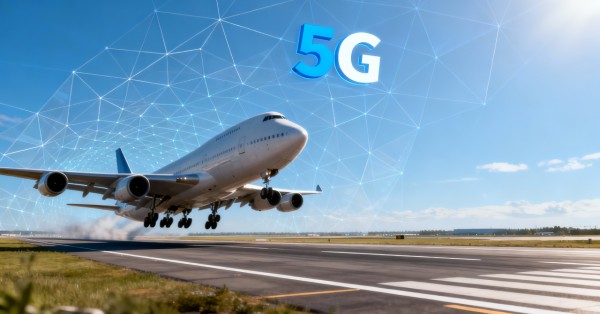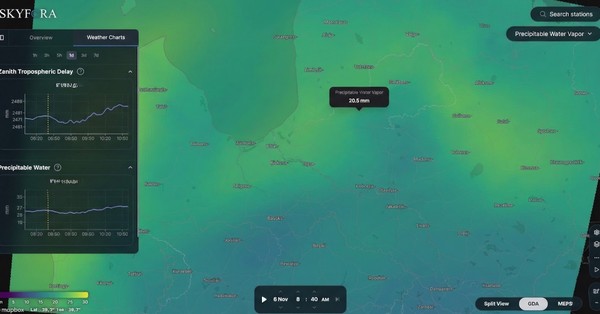ETSI, the European Telecommunications Standards Institute, has released the landmark report ETSI GR ISC 001, marking a significant milestone in the evolution of Integrated Sensing and Communication (ISAC) technologies for 6G networks. This comprehensive document details 18 advanced ISAC use cases, addressing functional and performance requirements, sensing and communication integration strategies, and deployment considerations that will shape the foundation of next-generation wireless systems.
ISAC and 6G: The Backbone of Future Intelligent Networks
ISAC represents a transformative approach that unifies communication and sensing capabilities within the same infrastructure. In future 6G environments, ISAC will provide networks with enhanced awareness of the physical world, enabling real-time interaction with environments, people, and devices.
The ETSI report lays out the architecture for this convergence, detailing integration levels, sensing modalities, and technical challenges. It recognizes that future 6G systems will not only transfer data but also interpret motion, detect objects, and understand contexts, supporting applications from smart cities and industry automation to healthcare and disaster management.
Core Components of ETSI GR ISC 001
Diverse ISAC Use Cases with Real-World Applications
ETSI GR ISC 001 identifies 18 advanced ISAC use cases, each representing a critical area where communication and sensing converge to provide innovative services. Let’s expand on the key categories mentioned:
1. Healthcare & Elderly Monitoring
- Body Proximity Sensing: Enables contactless monitoring of patient positioning and movement, ensuring safety in environments like hospitals or nursing homes. It can detect falls, unusual postures, or inactivity, and alert caregivers in real time.
- In-Home Monitoring: Leverages RF-based sensing integrated into walls or home devices to track vital signs like breathing or heartbeat without wearables. This supports continuous health assessments for elderly or chronically ill individuals.
- Outdoor Healthcare Sensing: Applied in public spaces to monitor physical activity, track environmental conditions affecting health (e.g., pollution or allergens), and respond to emergencies like collapses or strokes in real time.
2. Public Safety & Disaster Response
- Emergency Search and Rescue: Uses UAVs and sensor-equipped vehicles to detect survivors in debris or remote terrain. Sensing technologies like radar and thermal imaging combined with 6G allow real-time location tracking.
- Hazard Risk Monitoring: Enables early detection of environmental threats like floods, landslides, or earthquakes. Sensors collect topographical and environmental data to assess risks and dispatch alerts or evacuation orders.
3. Industrial Automation
- Micro-Deformation Sensing: Detects minute changes in the structural integrity of buildings, pipelines, or machinery using precision sensors. This allows predictive maintenance, reducing downtime and preventing accidents.
- Collaborative Robots & Digital Twins: Supports robot coordination using real-time sensing data. ISAC facilitates high-accuracy localization and control, enabling safe human-robot interaction and virtual simulations for factory planning.
4. Mobility & Transport
- UAV-Based Environmental Sensing: Drones gather detailed data for environmental mapping or infrastructure inspection (e.g., power lines, bridges). High-resolution sensing combined with 6G allows autonomous navigation and obstacle avoidance.
- Automated Guided Vehicles (AGVs) in Airports: Supports the safe and efficient movement of AGVs transporting luggage or supplies. Sensing improves collision avoidance, route optimization, and interaction with human-operated vehicles.
5. Smart Cities & Infrastructure
- Vision-Aided Traffic Management: Integrates cameras and radar with 6G networks to manage intersections, detect congestion, and prioritize emergency vehicles. Real-time data supports adaptive traffic signals and pedestrian safety measures.
- High-Resolution Topographical Mapping: Uses aerial or ground sensors to generate detailed maps for urban planning, disaster preparedness, and infrastructure development. The fusion of data from multiple sources enhances accuracy and detail.
Each use case is dissected to include: Pre-conditions, Service flows, Post-conditions, Functional and performance requirements, and Frequency bands and enabling technologies
Deployment Scenarios and Frequency Bands
The ETSI report outlines how ISAC use cases operate across a variety of deployment environments and frequency bands, offering unmatched flexibility and scalability in 6G systems.
Deployment Scenarios
ISAC-enabled services are designed to perform reliably in indoor, outdoor, and mixed environments. Each scenario comes with specific mobility requirements and sensing targets:
- Indoor Environments: Typically characterized by controlled conditions and fixed infrastructure. Use cases include smart homes, hospitals, manufacturing floors, and offices. These settings support low-power, high-precision sensing—ideal for health monitoring, digital twins, and gesture recognition.
- Outdoor Environments: These range from urban centers and roads to rural areas and industrial zones. Applications span traffic management, search and rescue, and UAV navigation. Outdoor scenarios often require robust coverage, mobility handling, and long-range sensing.
- Mixed Environments: Scenarios such as airports, shopping centers, or disaster zones involve both indoor and outdoor dynamics. ISAC systems must adapt quickly to changes in environment, signal conditions, and object types (e.g., transitioning from sensing people to detecting UAVs).
Sensing Targets
The ISAC framework supports a wide array of targets including:
- People – Detecting movement, posture, and health parameters
- Vehicles – Monitoring traffic patterns and collision risks
- UAVs (Unmanned Aerial Vehicles) – Ensuring safe autonomous operation
- Robots – Enabling coordination and environmental awareness in factories or service environments
Frequency Band Utilization
The choice of frequency band plays a critical role in balancing range, resolution, and environmental penetration:
Low-Band (Sub-6 GHz):
- Offers broader coverage and better penetration through walls and obstacles.
- Ideal for indoor and rural outdoor environments.
- Useful in health monitoring, presence detection, and basic motion sensing.
Mid-Band (~7–24 GHz):
- Provides a balance between range and resolution.
- Effective in urban sensing, vehicle tracking, and smart infrastructure.
- Can handle moderate object detail (e.g., distinguishing between vehicles or pedestrians).
High-Band (mmWave/THz):
- Delivers ultra-high-resolution sensing but limited to line-of-sight and short-range.
- Essential for fine-grained applications such as high-speed object recognition, facial gestures, or micro-deformation detection.
- Often combined with other sensors (e.g., LIDAR or optical) for complete environmental awareness.
Many use cases combine RF sensing with non-RF sensors (e.g., RGB cameras, environmental detectors, thermal sensors), leading to rich multimodal datasets. This sensor fusion greatly enhances reliability, especially in NLoS (non-line-of-sight) or harsh weather conditions.
Sensing Modes and Integration Levels
The ETSI GR ISC 001 report introduces a structured classification of how sensing and communication elements interact in future 6G systems. This is essential to tailor ISAC solutions for different application needs, balancing complexity, cost, and performance.
Sensing Modes
Sensing modes describe how transmitters and receivers are configured for sensing purposes. There are six core modes, each optimized for specific types of sensing tasks:
TRP-TRP Bistatic:
- Two base stations (or Transmission Reception Points – TRPs) act separately as transmitter and receiver.
- Useful for large-scale sensing like mapping road intersections or monitoring public areas.
- Offers a wide sensing angle and improved coverage.
TRP Monostatic:
- A single TRP acts as both transmitter and receiver.
- Common in fixed infrastructure sensing—e.g., motion detection in smart buildings.
- Simpler deployment and lower cost, but limited angular diversity.
TRP-UE Bistatic:
- The TRP transmits, and the User Equipment (UE) receives.
- Used in scenarios like localized indoor positioning where mobile devices assist in environmental sensing.
UE-TRP Bistatic:
- The UE transmits, and the TRP receives.
- Useful for tracking user movements, health monitoring, or XR gesture detection.
- Helps offload processing to network-side infrastructure.
UE-UE Bistatic:
- Two user devices exchange sensing signals.
- Enables peer-to-peer awareness—for instance, in collaborative gaming, social applications, or pedestrian safety.
UE Monostatic:
- A single device acts as both transmitter and receiver.
- Often seen in wearables or smartphones performing localized tasks like fall detection or breathing monitoring.
Multi-static configurations can be formed by adding more TRPs or UEs, further enhancing spatial awareness and robustness.
Integration Levels
ETSI defines how closely communication and sensing functionalities are intertwined, creating three main integration levels:
Loose Integration:
- Communication and sensing are independent systems.
- Coordination happens at the application or system level.
- Example: a factory with separate 6G network and LIDAR units working in tandem.
- Easier to implement initially but with limited synergy or efficiency.
Intermediate Integration:
- Partial hardware or signal sharing—some functions are co-located or co-managed.
- Example: base stations using shared RF front-ends for both data and sensing tasks.
- Suitable for environments needing moderate performance at a lower cost.
Tight Integration:
- Communication and sensing are designed from the ground up as a unified system.
- Joint waveform design enables simultaneous sensing and data transmission.
- Example: 6G XR headsets using the same signal for both data streaming and motion tracking.
- Delivers optimal efficiency, accuracy, and responsiveness—ideal for mission-critical applications.
This layered approach gives implementers the flexibility to choose based on specific operational and economic constraints.
Key Requirements and KPIs for ISAC in 6G
To support a wide range of Integrated Sensing and Communication (ISAC) services, the ETSI GR ISC 001 report introduces a new generation of Key Performance Indicators (KPIs). These go beyond traditional network metrics like throughput and latency to measure sensing effectiveness in real-world deployments. Here’s a detailed look at the most critical KPIs:
Fine Motion Accuracy
- What it measures: The ability of the system to detect and classify very subtle or small-scale movements (e.g., hand gestures, breathing patterns, heartbeat).
- Why it matters: Essential for healthcare use cases (e.g., sleep monitoring), immersive XR applications, and human-computer interaction.
- Example: Distinguishing between different hand gestures for virtual reality control or detecting irregular breathing in sleep apnea patients.
Sensing Service Range
- What it measures: The maximum distance over which accurate sensing can occur, often in meters.
- Why it matters: Impacts system design for large-scale deployments like traffic monitoring, disaster search and rescue, and UAV tracking.
- Example: Detecting vehicle positions across a multi-lane intersection or mapping terrain via aerial drones.
Sensing Latency
- What it measures: The time it takes from initiating a sensing task to obtaining a result.
- Why it matters: Real-time responsiveness is crucial for autonomous driving, industrial automation, and interactive gaming or XR.
- Target ranges: Some use cases require latencies as low as 1 millisecond.
Sensing Refresh Rate
- What it measures: How frequently sensing data is updated—expressed in Hz or as an interval (e.g., every 100ms).
- Why it matters: High refresh rates ensure up-to-date information for fast-moving targets or rapid changes in the environment.
- Example: Tracking a runner’s gait during a workout or detecting sudden vehicle movement in automated traffic systems.
Missed Detection Rate
- What it measures: The percentage of times the system fails to detect an object or event when it is actually present.
- Why it matters: A high missed detection rate undermines trust in critical systems like safety alarms or UAV navigation.
- Target: Typically below 1–5% for high-reliability use cases.
False Alarm Rate
- What it measures: The percentage of times the system incorrectly detects something that isn’t there.
- Why it matters: False positives can lead to unnecessary interventions or disruptions—especially in security or medical scenarios.
- Target: As low as possible (often <1%) depending on application sensitivity.
Resolution Metrics
These define how finely the system can differentiate between objects in terms of space and velocity.
- Range Resolution: The minimum distance between two objects the system can distinguish.
- Crucial for applications like indoor robotics or smart factories where obstacles may be closely spaced.
- Velocity Resolution: How finely the system can detect speed changes.
- Important for motion analysis in sports, autonomous vehicles, or precise machinery.
These KPIs collectively establish a performance evaluation framework that aligns sensing capabilities with the strict demands of real-world applications. They also provide a benchmark for testing, certification, and standardization across vendors and industries.
Security, Privacy, Sustainability, and Trust in ISAC
As Integrated Sensing and Communication (ISAC) becomes embedded into future 6G systems, it’s not just performance that matters—security, privacy, trustworthiness, and environmental impact become mission-critical concerns. ETSI GR ISC 001 makes it clear: ISAC must be responsible by design. Here’s how each of these non-functional aspects plays a role:Security
Risks: ISAC systems deal with large volumes of potentially sensitive data, including user location, motion, health, and behavior. This makes them attractive targets for cyberattacks.
ETSI’s Recommendations:
- Implement end-to-end encryption of sensing data.
- Ensure authentication and integrity of sensing sources and devices.
- Apply access control mechanisms so only authorized systems or personnel can interpret or act on sensing results.
Use Case Implications: In autonomous driving or industrial robotics, spoofed or altered sensing data could result in accidents or operational failures.
Privacy
Concerns: Many ISAC applications are human-centric—monitoring gestures, postures, health metrics, or daily movements. This data is often personal and sensitive.
Solutions:
- Comply with regulations like GDPR and local privacy laws.
- Support data anonymization or pseudonymization techniques.
- Allow user consent and transparency, especially in public or shared environments.
Example: In smart homes or elder care facilities, users should be aware of what data is collected, how it’s used, and who has access.
Trustworthiness
Why It Matters: Systems relying on automated sensing must deliver results that are consistently accurate, explainable, and free from bias.
Trust Components:
- System reliability under variable conditions (weather, interference, mobility)
- Data provenance to verify the source and chain of custody of sensing inputs
- Transparency in decision-making processes, especially when AI is involved
Implications: A robot acting on fused sensing data must be able to justify its interpretation—especially in collaborative human-robot workspaces or safety-critical applications.
Sustainability
Challenge: Sensing components (e.g., radar, cameras, antennas) and data processing platforms (like AI accelerators) consume significant energy.
ETSI’s Focus Areas:
- Energy-efficient design of sensing-capable radios and devices
- Lifecycle assessments for environmental impact (production, usage, disposal)
- Use of edge computing to reduce cloud dependency and transmission energy
Green ISAC Vision: Future ISAC systems should support both environmental sustainability goals and efficient infrastructure utilization.
Together, these factors ensure ISAC doesn’t just revolutionize technology—it does so ethically, securely, and sustainably. They’re not add-ons but core design pillars for deployment at scale.
System Architecture and Data Fusion in ISAC for 6G
At the heart of ISAC’s value lies the fusion of data across diverse sources and the architectural ability to process and act on that data in real time. ETSI GR ISC 001 lays out a forward-looking vision for a modular, intelligent, and highly adaptable 6G system architecture that tightly integrates sensing and communication.
System Architecture Enhancements
To support ISAC, 6G architecture must evolve beyond traditional networking models:
Sensing-Capable Base Stations (TRPs):
TRPs now serve dual roles—as communication hubs and sensing nodes.
They transmit and receive specialized reference signals for object detection, localization, and motion tracking.
Architecture must support joint configuration and scheduling of sensing and communication resources.
Sensing Tasks as Services:
- ETSI introduces the concept of “sensing tasks”—activities like configuring sensing parameters, collecting data, processing it, and returning results.
- These are handled similarly to network services, complete with QoS parameters and performance SLAs.
Interfaces for Non-6G Sensors:
- The architecture supports integration of external sensing data sources like LIDAR, infrared cameras, thermal sensors, or even weather stations.
- This requires standardized APIs and robust trust management to ensure compatibility and authenticity.
Sensing-Aware RAN and Core:
- RAN must dynamically adapt beamforming, power levels, and frame structures to support real-time sensing.
- Core networks should support service exposure, analytics, and policy control for sensing use cases.
Data Fusion: Making Sense of Sensing
ISAC data is multimodal—coming from different devices, modalities, and locations. To ensure accurate interpretation, systems must perform data fusion at various layers:
Raw Data Fusion:
- Combines raw signals (e.g., from multiple antennas or radar beams) for improved spatial awareness.
- Requires low-latency processing and synchronized time-stamping.
Feature-Level Fusion:
- Extracted features like velocity vectors, object types, or trajectories are merged.
- Supports mid-level decisions like predicting human gestures or recognizing traffic congestion.
Decision-Level Fusion:
- High-level inferences or decisions (e.g., detect pedestrian, identify accident) from various nodes are aggregated.
- Used in distributed systems like smart cities or coordinated UAV fleets.
Fusion can occur across three layers:
- At the Edge – Close to the source, enabling real-time response.
- In the RAN/Core – For deeper analytics and service orchestration.
- Via Cloud/AI Services – For long-term trend analysis, training AI models, or digital twins.
Trust Management in Data Fusion
To ensure reliability:
- Nodes must validate source authenticity (preventing data spoofing).
- Fusion algorithms must assess confidence levels of different inputs.
- Results should be traceable and auditable—crucial for explainable AI.
ISAC’s architectural evolution reflects the broader 6G trend: networks are no longer just communication pipelines—they are intelligent ecosystems capable of perceiving and reacting to the world in real time.
Standardization Roadmap and Strategic Impact
The ETSI GR ISC 001 report doesn’t just provide a snapshot of current ISAC capabilities—it lays the groundwork for a coordinated and standardized rollout of ISAC within the 6G era. It aligns with ongoing initiatives across multiple standards bodies, research alliances, and industrial consortia.
ETSI’s Multi-Document ISAC Roadmap
Following the release of GR ISC 001, ETSI is advancing ISAC through additional technical reports, each focusing on specific challenges and components of ISAC deployment:
ETSI GR ISC 002 – Channel Modeling, Measurements and Evaluation Methodology
- Will define realistic channel models for sensing scenarios in various environments (e.g., urban, rural, indoor, high mobility).
- Essential for simulation, testing, and validation of ISAC-enabled devices and systems.
ETSI GR ISC 003 – System and RAN Architectures
- Will expand on network architecture frameworks that natively support ISAC functionalities.
- Includes reference models, control plane extensions, and integration with other 6G technologies like edge computing and RIS (Reconfigurable Intelligent Surfaces).
ETSI GR ISC 004 – Security, Privacy, Trustworthiness, and Sustainability
- Will provide specific implementation guidelines and regulatory alignment for safeguarding ISAC systems.
- Targets critical use cases like healthcare, vehicular networks, and industrial robotics.
Alignment with Other Standards Bodies and Alliances
- 3GPP SA1: ETSI’s ISAC outputs are already influencing 3GPP Release 20, especially the TR 22.870 study on 6G use cases and service requirements.
- one6G Alliance: Joint focus on e-health, robotics, and immersive communications.
- 5GAA: Integrating ISAC for connected mobility and ADAS (Advanced Driver Assistance Systems).
- IEEE & ITU: Complementary work on spectrum, waveform design, and performance evaluation.
This collaboration helps avoid duplication, ensures global interoperability, and accelerates commercial readiness.
Feedback Loop to Industry and Research
ETSI encourages industry and academia to:
- Use the use cases and KPIs as design references.
- Contribute to the next iterations of the ISAC reports.
- Share trial and pilot results to validate assumptions.
This keeps the standardization process dynamic, inclusive, and grounded in real-world feasibility.
Final Thoughts: Toward Intelligent, Perceptive 6G Networks
The ETSI GR ISC 001 report marks a turning point. It moves us from theory to application—from speculative 6G visions to implementable use cases grounded in clearly defined metrics and architectural logic.
With ISAC, 6G becomes more than connectivity. It becomes:
- A real-time environmental sensor, detecting and interpreting the world.
- A guardian, enabling safer, smarter cities, vehicles, and homes.
- A collaborator, empowering robots, drones, and machines to work seamlessly alongside humans.
- A healer, delivering healthcare services without touching a patient.
Through careful standardization and collaboration, ETSI is building the intelligent fabric of our digital future—one sensing use case at a time.
Download the full report: ETSI GR ISC 001 – ISAC Use Cases and Deployment Scenarios







































